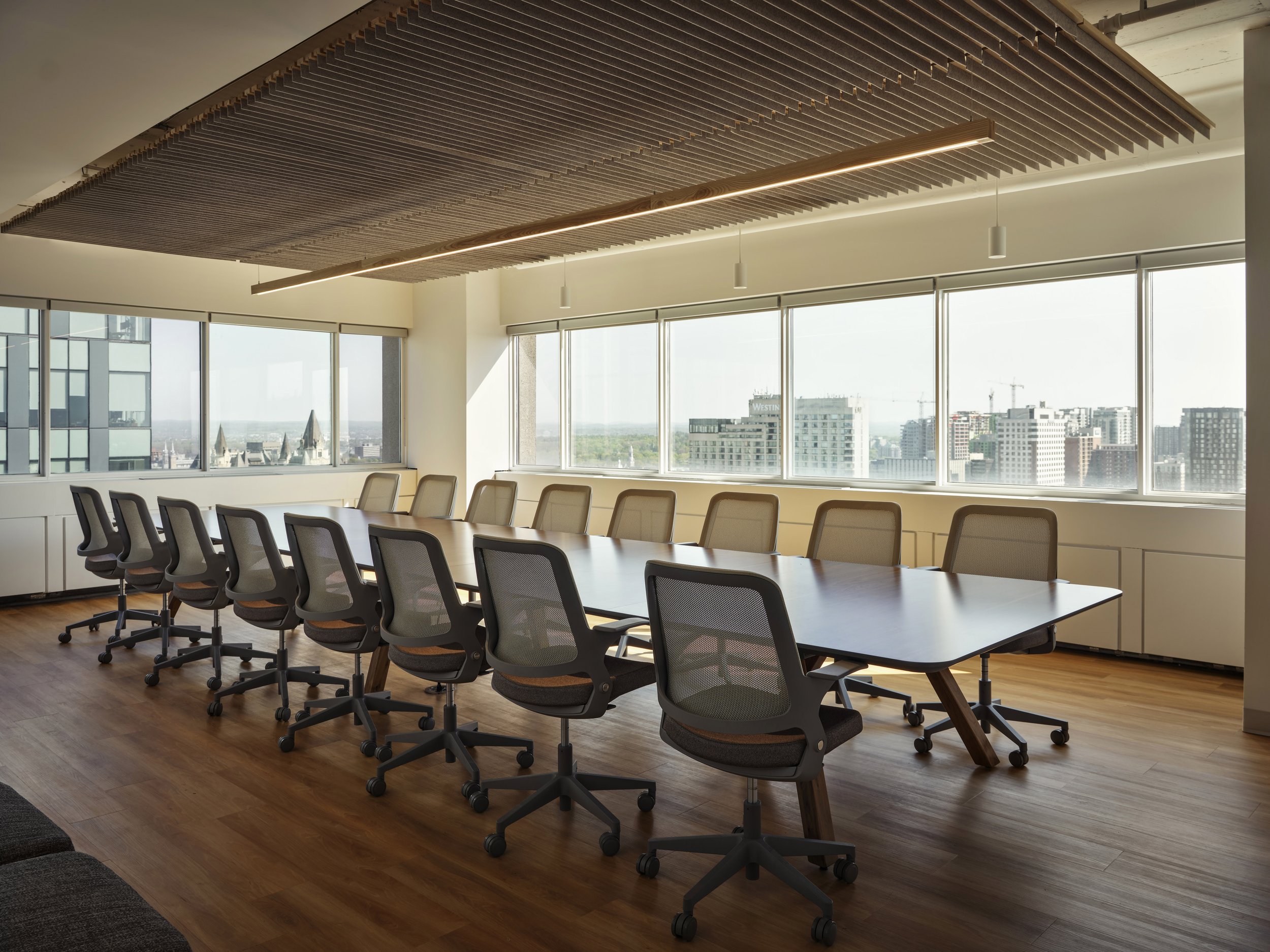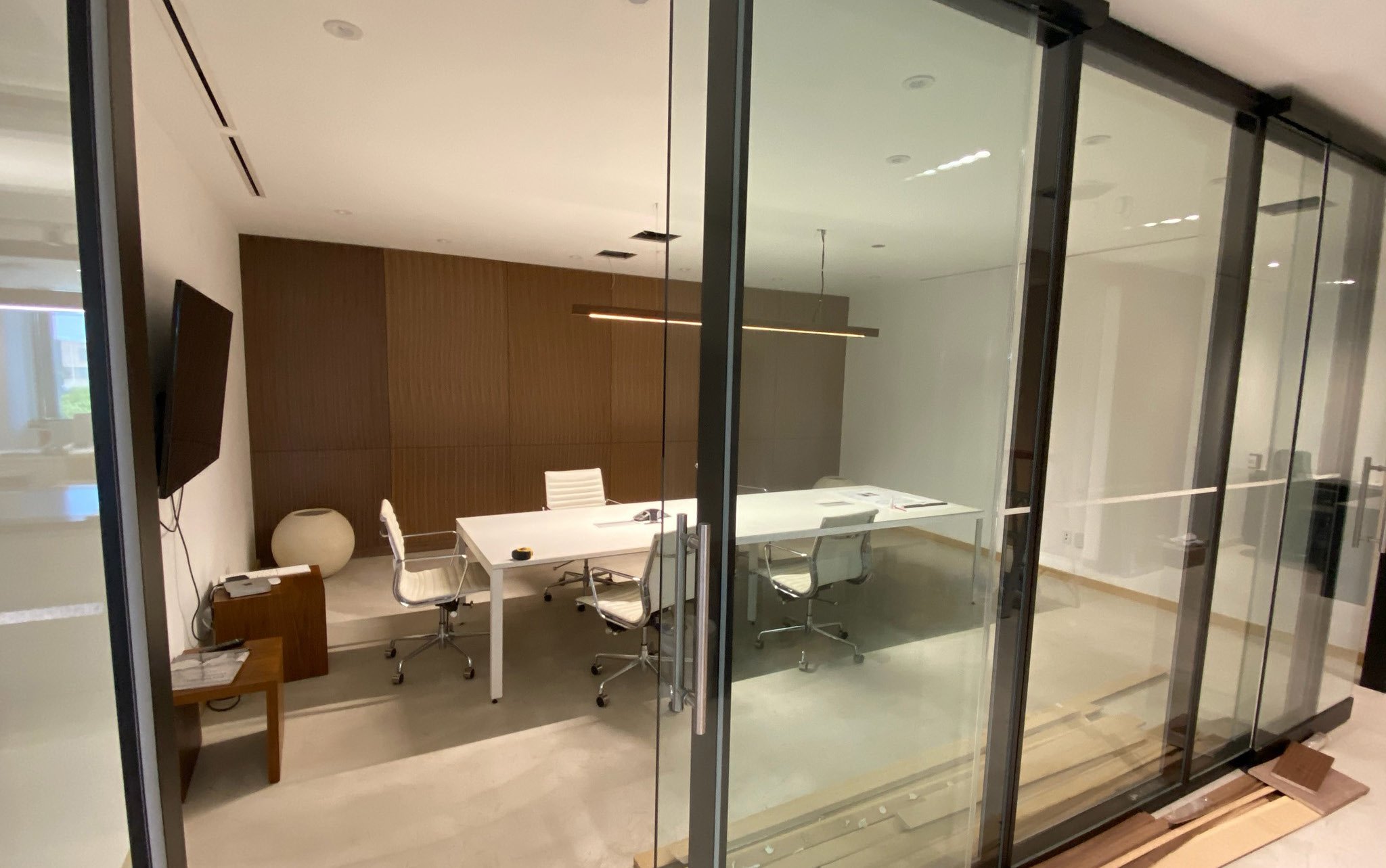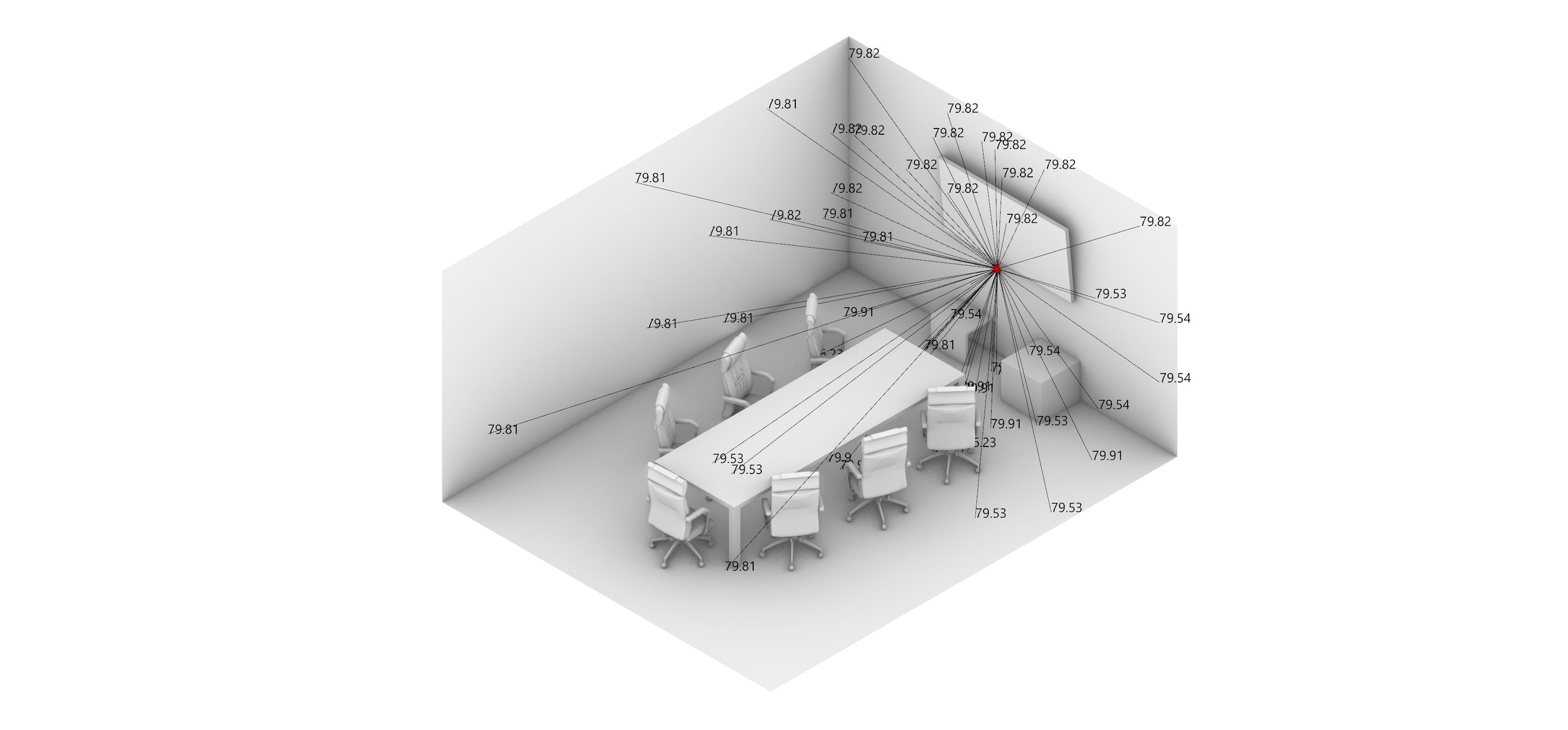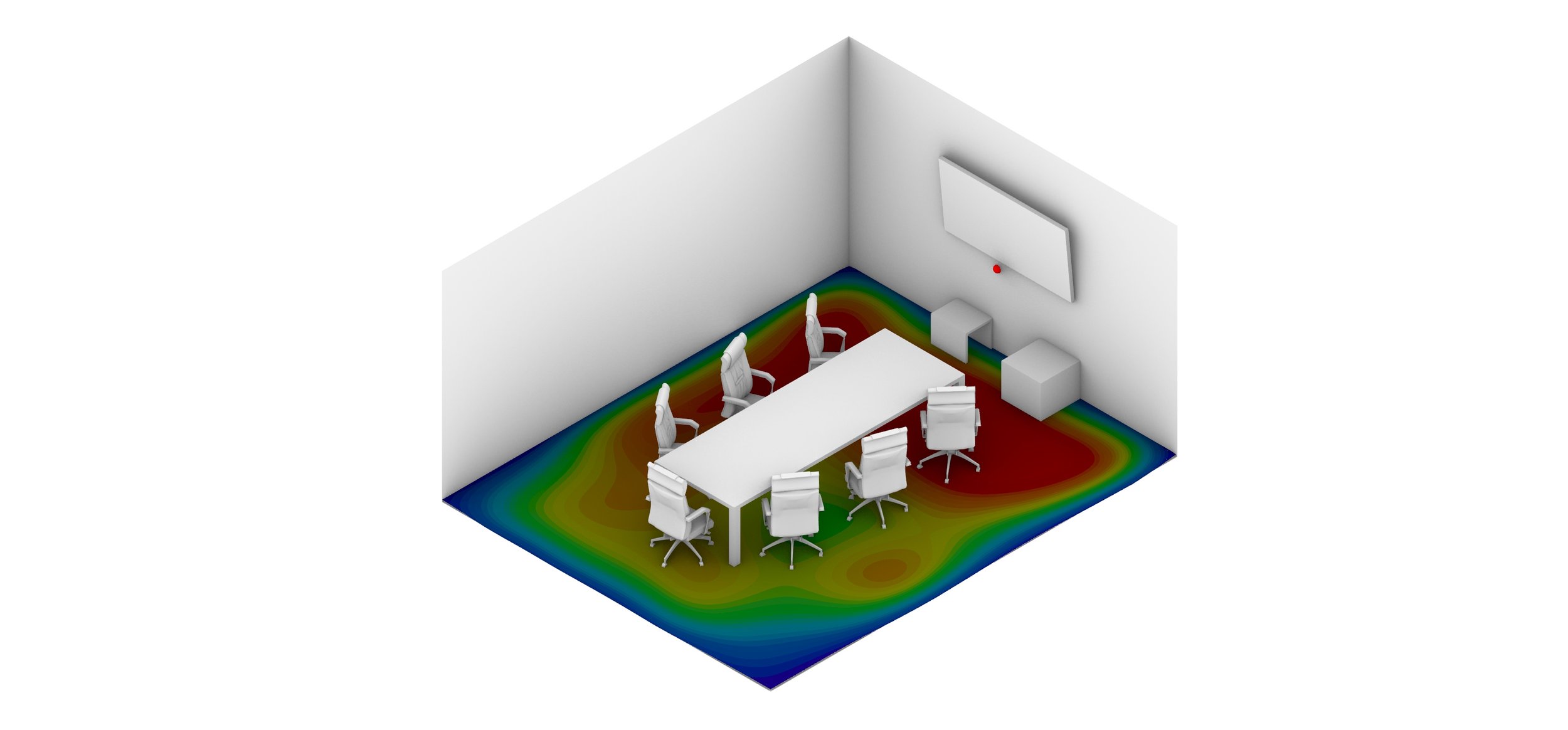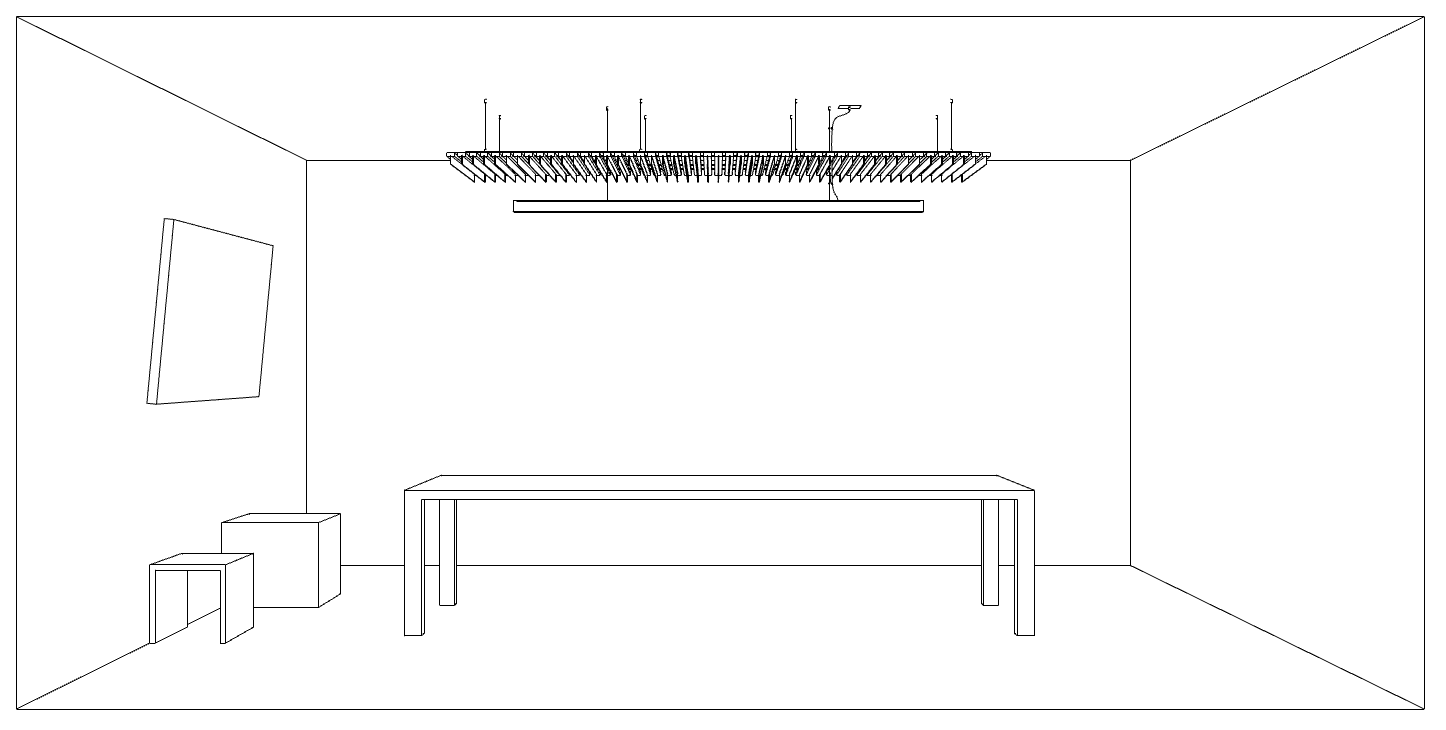Acoustic Analysis
We understand that every space is unique, as are it’s acoustics. That is why we developed a system to help sculpt with sound and make an ephemeral experience a tangible feeling.
aaline Acoustic Spatial Analysis
aaline offers products and services designed to make any space sound amazing. Our Acoustic Spatial Analysis software is a proprietary platform built to simulate and optimize the acoustic performance of interior spaces. This analytical approach allows us to gain a better understanding of the acoustics of any space, based on geometrical organization and finishing materials. By using digital tools that focus on an iterative process of design development, we can assist your team in increasing occupant comfort and treating acoustics as an additional element in your interior design toolbox.
To find the perfect balance of reverberation time and sound intensity, aaline's Acoustic Spatial Analysis includes raw data and visualizations to communicate potential shapes, materials, and orientations of acoustic reflectors, absorbers, and diffusers. Our design team will work with you directly and consult through the process, from conceptual development to delivery and installation.
Metrics
SOUND REFLECTION + ABSORPTION
When a sound is produced, it expands through the air in a spherical pressure wave. When the wave reaches a surface, some of its energy is reflected, while the rest is absorbed. The Noise Reduction Coefficient measures how much energy a surface absorbs, and how much it reflects. Hard surfaces tend to have low NRC ratings; reflecting most of the energy in a sound wave, and absorbing very little. Soft surfaces tend to have high NRC ratings; reflecting less energy, and absorbing more.
SOUND PRESSURE LEVEL + REVERBERATION TIME
Outside, a spherical sound wave can expand as much as it needs to. Inside, however, the energy is trapped. Reverberation is the result of sound waves repeatedly reflecting off the surfaces of an enclosed space. Because the space is enclosed, the only way for the sound to dissipate is through atmospheric and material absorption, rather than spreading. Reverberation time is the time it takes for the sound pressure level (SPL) in a room, measured in decibels, to decrease by a stated amount, after a sound source stops emitting sound. RT60 measures the time it takes for the SPL to decrease by 60 decibels
The atmosphere also has a damping effect on a sound wave, because the molecules in the air absorb tiny amounts of energy as they move. This effect is called atmospheric absorption.
In general, rooms with mostly hard surfaces (Low NRC) tend to have high reverberation times, while rooms with many soft surfaces (High NRC) tend to have low reverberation times. The optimal RT60 for conference rooms is around 0.6s, according to the Well Building Institute.
Step-By-Step
The existing conference room is made up of hard, flat surfaces, contributing to large amounts of reflection, and minimal absorption and diffusion.
Room Dimensions: 20’-4” by 16’-5” by height 10’
Materials: Concrete, hardwood, plaster, metal, glass
Furnishings: Lightly furnished with leather seats.
*Each surface in the room must be tagged with a material, and an associated NRC rating, in order to calculate material absorption.
step 01: data collection
Sound source (80dB), projecting rays onto the surfaces of the case study room. Tags denote SPL at each reflection.
A source is created which emits sound in a cone with a specified orientation and width. Rays trace sound’s pathways through the space, updating their SPL based on the atmospheric and material absorption associated with each reflection. These rays are sampled, in order to create maps of the sound’s dispersion through the room.
step 02: PROCESSING + ANALYSIS
step 03: PROPOSAL + REPORTING
We propose a set of options incorporating our products in various combinations, and supply metrics and visualizations to quantify their impact. We also offer a range of high quality material and colour options for each product, which are listed on our specification sheets.
Sample specification sheet with custom parameters for lighting and acoustics.

